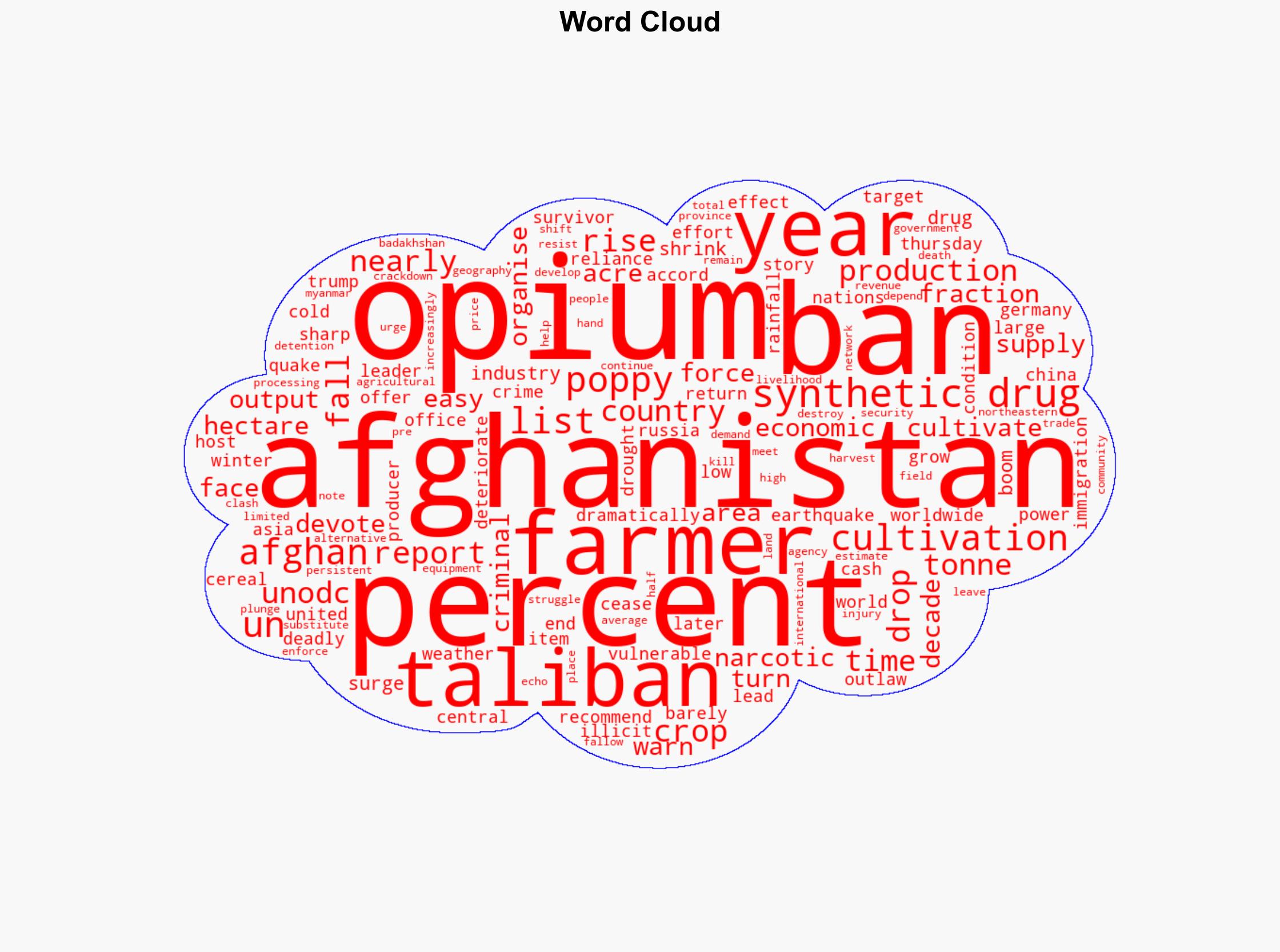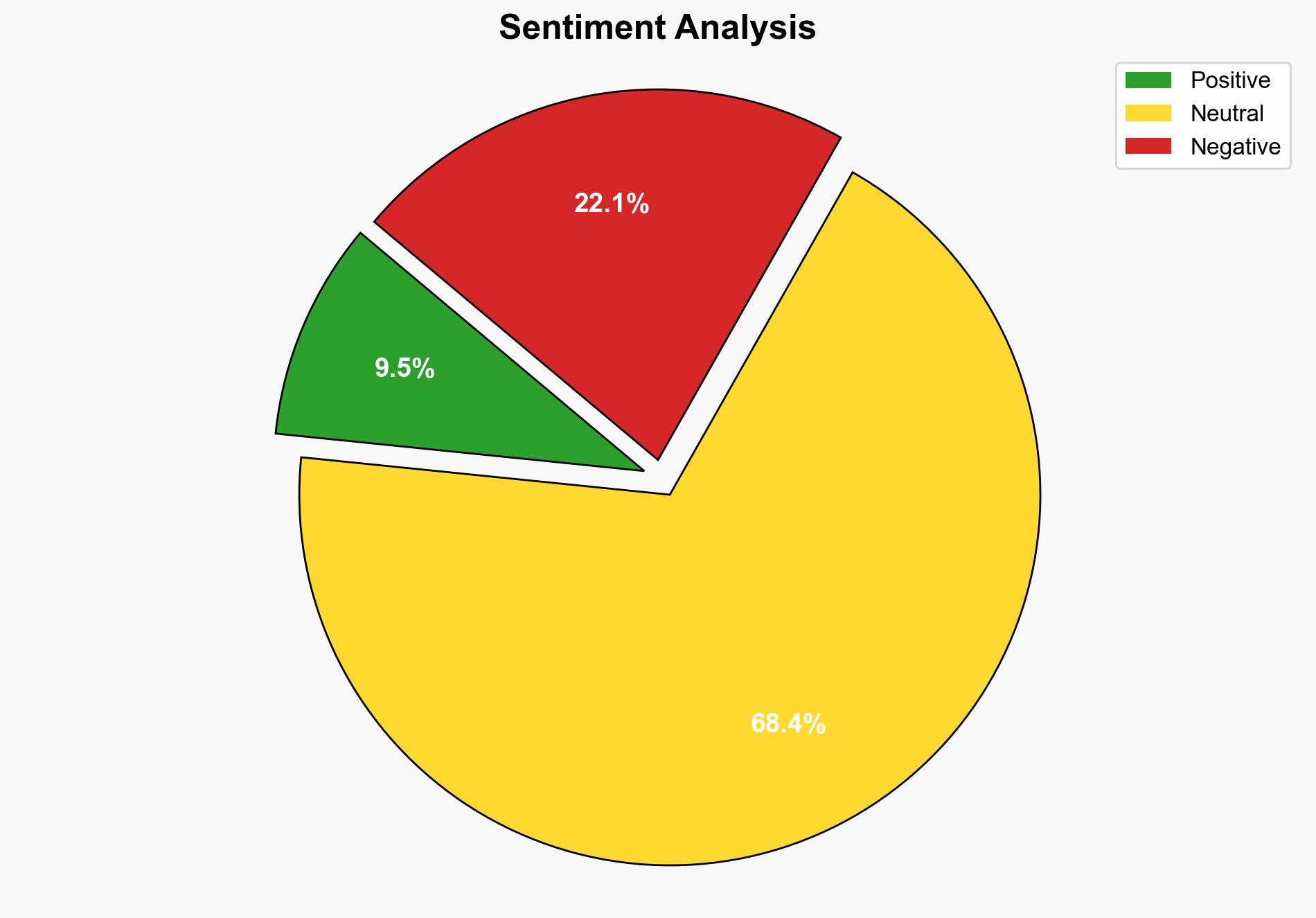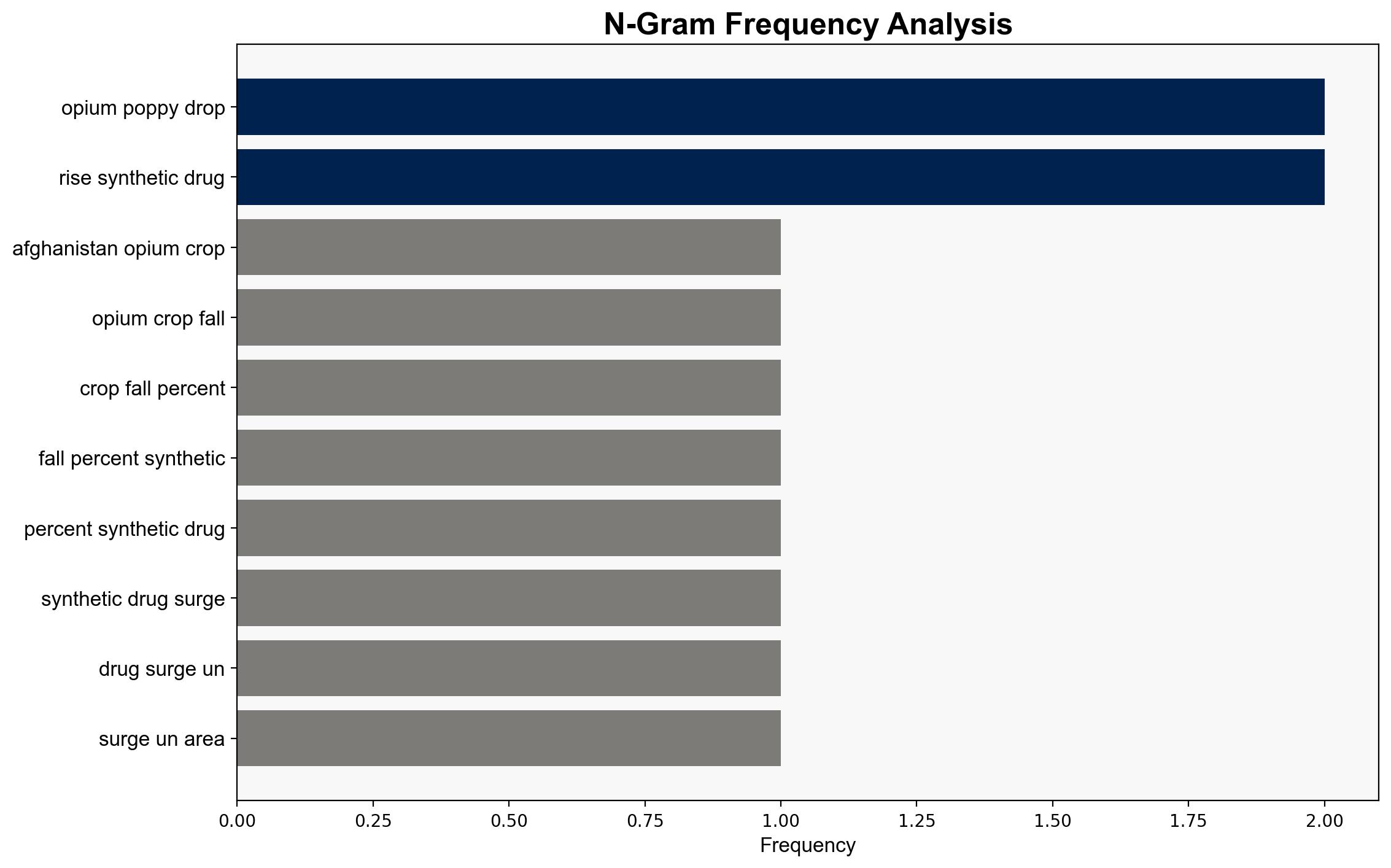Afghanistans opium crop falls 20 percent as synthetic drugs surge – Al Jazeera English
Published on: 2025-11-06
Intelligence Report: Afghanistan’s Opium Crop Falls 20 Percent as Synthetic Drugs Surge
1. BLUF (Bottom Line Up Front)
The decline in Afghanistan’s opium production, attributed to the Taliban’s narcotic ban, coincides with a significant rise in synthetic drug production, particularly methamphetamine. The most supported hypothesis is that organized criminal networks are shifting operations to synthetic drugs due to their ease of production and detection challenges. Confidence Level: Moderate. Recommended action includes international collaboration to support alternative livelihoods for Afghan farmers and enhance regional law enforcement capabilities against synthetic drug trafficking.
2. Competing Hypotheses
Hypothesis 1: The Taliban’s narcotic ban has effectively reduced opium cultivation, leading to a shift towards synthetic drug production by organized crime networks.
Hypothesis 2: The reduction in opium cultivation is primarily due to adverse weather conditions and economic factors, with synthetic drug production rising independently as a separate trend.
3. Key Assumptions and Red Flags
Assumptions: Hypothesis 1 assumes a direct causal link between the Taliban’s ban and the rise in synthetic drug production. Hypothesis 2 assumes economic and environmental factors are the primary drivers of reduced opium cultivation.
Red Flags: Lack of detailed data on synthetic drug production methods and distribution networks. Potential underreporting of opium cultivation in remote areas.
4. Implications and Strategic Risks
The shift towards synthetic drugs poses a significant threat due to their resilience to climate change and ease of production. This could lead to increased regional instability and strain on law enforcement resources. The economic impact on Afghan farmers may exacerbate poverty and drive recruitment into illicit activities.
5. Recommendations and Outlook
- Enhance international cooperation to provide alternative livelihoods for Afghan farmers, reducing reliance on illicit crops.
- Strengthen regional law enforcement and intelligence-sharing to combat synthetic drug trafficking.
- Scenario Projections:
- Best Case: Successful implementation of alternative livelihoods reduces illicit crop dependency.
- Worst Case: Synthetic drug production escalates, leading to increased regional crime and instability.
- Most Likely: Continued rise in synthetic drug production with partial success in alternative livelihood programs.
6. Key Individuals and Entities
No specific individuals are mentioned in the source text. Key entities include the Taliban, UNODC, and organized criminal networks.
7. Thematic Tags
national security threats, drug trafficking, regional focus, economic development, law enforcement





